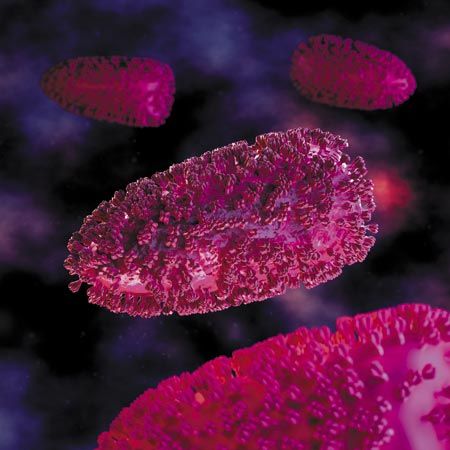Journal Scan: Rabies revelation
A recent study proposes the first-ever molecular model for the cause of rabies infection-associated behavior.

Rabies cells. (Shutterstock.com)Despite our best control efforts, rabies still kills nearly 50,000 people a year worldwide. With few to no treatment options available, mortality rates for infected people are nearly 100%.
We know that infections are characterized by behavioral and neurologic symptoms, but we don't have a clear model for why these changes occur-though it's been suggested that nicotinic acetylcholine receptors (nAChRs) are implicated in these changes. The authors of a recent study examined the effects of a rabies glycoprotein with affinity to nAChR to see if it produced behavioral symptoms similar to a natural rabies infection.
What they did
Because both rabies and snake venom have strong affinities to nAChR, the authors first compared various rabies glycoproteins recovered from animals with confirmed rabies infections to those of a type of snake venom glycoprotein with known affinity to nAChR using a surface plasmon resonance test. Once they identified the rabies glycoprotein most similar to the snake venom glycoprotein, they injected it first into roundworms and then into the cerebrospinal fluid of mice and observed them for behavioral and neurologic signs similar to rabies infection.
What they found
The authors found that normal pharyngeal pumping, an nAChR-controlled response, was significantly decreased to totally absent in the roundworms injected with the rabies glycoprotein. In mice injected with the rabies glycoprotein, locomotor hyperactivity was noted when compared with control mice. Both reactions are consistent with natural rabies infection.
Take-home points
For the first time, a molecular model for the cause of rabies infection-associated behavior has been proposed. A snake venom-like rabies glycoprotein has a strong affinity for nAChR and can cause experimentally induced rabies-like behavior in roundworms and mice. The study's authors note that these results suggest therapies inhibiting the neurologic activity of virus-derived peptides could be beneficial after the onset of signs for diseases like rabies.
Read the full study here.
Hueffer K, Khatri S, Rideout S, et al. Rabies virus modifies host behaviour through a snake-toxin like region of its glycoprotein that inhibits neurotransmitter receptors in the CNS. Scientific Reports 2017;7(1).